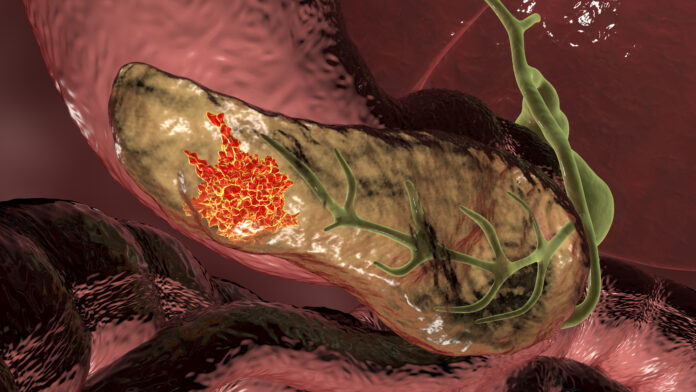Bartel, D. P. Metazoan micrornas. Cell. 173(1), 20–51 (2018).
Cox, J. E. & Sullivan, C. S. Balance and stealth: the role of noncoding RNAs in the regulation of virus gene expression. Annu. Rev. Virol. 1, 89–109 (2014).
Pawlica, P. et al. SARS-CoV-2 expresses a microRNA-like small RNA able to selectively repress host genes. Proc. Natl. Acad. Sci. 118(52), 1 (2021).
Schult, P. et al. microRNA-122 amplifies hepatitis C virus translation by shaping the structure of the internal ribosomal entry site. Nat. Commun. 9(1), 1–14 (2018).
Scheel, T. K. et al. A broad RNA virus survey reveals both miRNA dependence and functional sequestration. Cell Host Microbe. 19(3), 409–423 (2016).
Tenoever, B. R. RNA viruses and the host microRNA machinery. Nat. Rev. Microbiol. 11(3), 1 (2013).
Trobaugh, D. W. et al. RNA viruses can hijack vertebrate microRNAs to suppress innate immunity. Nature. 506(7487), 245–248 (2014).
Hosseini Rad, S. M. Implications of SARS-CoV-2 mutations for genomic RNA structure and host microRNA targeting. Int. J. Mol. Sci. 21(13), 4807 (2020).
Gupta, S. K., Bang, C. & Thum, T. Circulating microRNAs as biomarkers and potential paracrine mediators of cardiovascular disease. Circ. Cardiovasc. Genet. 3(5), 484–488 (2010).
Liu, W. et al. Association of miR-197-5p, a circulating biomarker for heart failure, with myocardial fibrosis and adverse cardiovascular events among patients with stage C or D heart failure. Cardiology. 141(4), 212–225 (2018).
Schulte, C. et al. miRNA-197 and miRNA-223 predict cardiovascular death in a cohort of patients with symptomatic coronary artery disease. PloS One. 10(12), e0145930 (2015).
Condorelli, G., Latronico, M. V. & Dorn, G. W. microRNAs in heart disease: putative novel therapeutic targets?. Eur. Heart J. 31(6), 649–658 (2010).
Luo, P. & Zhang, W. MicroRNA-18b* induces apoptosis in cardiomyocytes through targeting Topoisomerase 1 (TOP1). Int. J. Clin. Exp. Med. 10(4), 6742–6748 (2017).
Tijsen, A. J. et al. MiR423-5p as a circulating biomarker for heart failure. Circ. Res. 106(6), 1035 (2010).
Chen, L. et al. miR-197 expression in peripheral blood mononuclear cells from hepatitis B virus-infected patients. Gut Liver. 7(3), 335 (2013).
Tang, W.-F. et al. Host microRNA miR-197 plays a negative regulatory role in the enterovirus 71 infectious cycle by targeting the RAN protein. J. Virol. 90(3), 1424–1438 (2016).
Wang, H. et al. Reciprocal control of miR-197 and IL-6/STAT3 pathway reveals miR-197 as potential therapeutic target for hepatocellular carcinoma. Oncoimmunology. 4(10), e1031440 (2015).
Weseslindtner, L. et al. Micro RNA s mir-106a, mir-122 and mir-197 are increased in severe acute viral hepatitis with coagulopathy. Liver Int. 36(3), 353–360 (2016).
Zhang, Y. M., Yu, Y. & Zhao, H. P. EBV-BART-6-3p and cellular microRNA-197 compromise the immune defense of host cells in EBV-positive Burkitt lymphoma. Mol. Med. Rep. 15(4), 1877–1883 (2017).
Peng, F., Loo, J. F. C., Kong, S. K., Li, B. & Gu, D. Identification of serum MicroRNAs as diagnostic biomarkers for influenza H7N9 infection. Virol. Rep. 7, 1–8 (2017).
Duy, J. et al. Circulating microRNA profiles of Ebola virus infection. Sci. Rep. 6(1), 1–13 (2016).
Yang, Z. et al. Hepatitis B virus X protein enhances hepatocarcinogenesis by depressing the targeting of NUSAP1 mRNA by miR-18b. Cancer Biol. Med. 16(2), 276 (2019).
Gao, L. et al. Dynamic expression of viral and cellular microRNAs in infectious mononucleosis caused by primary Epstein-Barr virus infection in children. Virol. J. 12(1), 1–11 (2015).
Rashad, N. M., El-Shal, A. S., Shalaby, S. M. & Mohamed, S. Y. Serum miRNA-27a and miRNA-18b as potential predictive biomarkers of hepatitis C virus-associated hepatocellular carcinoma. Mol. Cell. Biochem. 447(1), 125–136 (2018).
De Maio, N. et al. Mutation rates and selection on synonymous mutations in SARS-CoV-2. Genome Biol. Evol. 13(5), 87 (2021).
Shan, K.-J., Wei, C., Wang, Y., Huan, Q. & Qian, W. Host-specific asymmetric accumulation of mutation types reveals that the origin of SARS-CoV-2 is consistent with a natural process. Innovation. 2(4), 100159 (2021).
Correia de Sousa, M., Gjorgjieva, M., Dolicka, D., Sobolewski, C. & Foti, M. Deciphering miRNAs’ action through miRNA editing. Int. J. Mol. Sci. 20(24), 6249 (2019).









